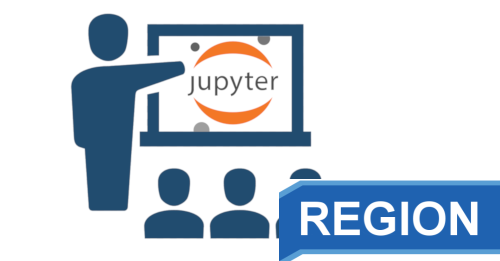Teaching on Jupyter
Using notebooks to accelerate learning and curriculum development
DOI:
https://doi.org/10.18335/region.v7i1.282Abstract
The proliferation of large, complex data spatial data sets presents challenges to the way that regional science --- and geography more widely -- is researched and taught. Increasingly, it is not 'just' quantitative skills that are needed, but computational ones. However, the majority of undergraduate programmes have yet to offer much more than a one-off ‘GIS programming’ class since such courses are seen as challenging not only for students to take, but for staff to deliver. Using evaluation criterion of minimal complexity, maximal flexibility, interactivity, utility, and maintainability, we show how the technical features of Jupyter notebooks -- particularly when combined with the popularity of Anaconda Python and Docker -- enabled us to develop and deliver a suite of three 'geocomputation' modules to Geography undergraduates, with some progressing to data science and analytics roles.

Published
Versions
- 2020-03-23 (2)
- 2020-03-23 (1)
How to Cite
Issue
Section
License
Copyright (c) 2020 Jonathan Reades

This work is licensed under a Creative Commons Attribution-NonCommercial 4.0 International License.
REGION is an open journal, and uses the standard Creative Commons license: Copyright We want authors to retain the maximum control over their work consistent with the first goal. For this reason, authors who publish in REGION will release their articles under the Creative Commons Attribution license. This license allows anyone to copy and distribute the article provided that appropriate attribution is given to REGION and the authors. For details of the rights authors grant users of their work, see the "human-readable summary" of the license, with a link to the full license. (Note that "you" refers to a user, not an author, in the summary.) Upon submission, the authors agree that the following three items are true: 1) The manuscript named above: a) represents valid work and neither it nor any other that I have written with substantially similar content has been published before in any form except as a preprint, b) is not concurrently submitted to another publication, and c) does not infringe anyone’s copyright. The Author(s) holds ERSA, WU, REGION, and the Editors of REGION harmless against all copyright claims. d) I have, or a coauthor has, had sufficient access to the data to verify the manuscript’s scientific integrity. 2) If asked, I will provide or fully cooperate in providing the data on which the manuscript is based so the editors or their assignees can examine it (where possible) 3) For papers with more than one author, I as the submitter have the permission of the coauthors to submit this work, and all authors agree that the corresponding author will be the main correspondent with the editorial office, and review the edited manuscript and proof. If there is only one author, I will be the corresponding author and agree to handle these responsibilities.




